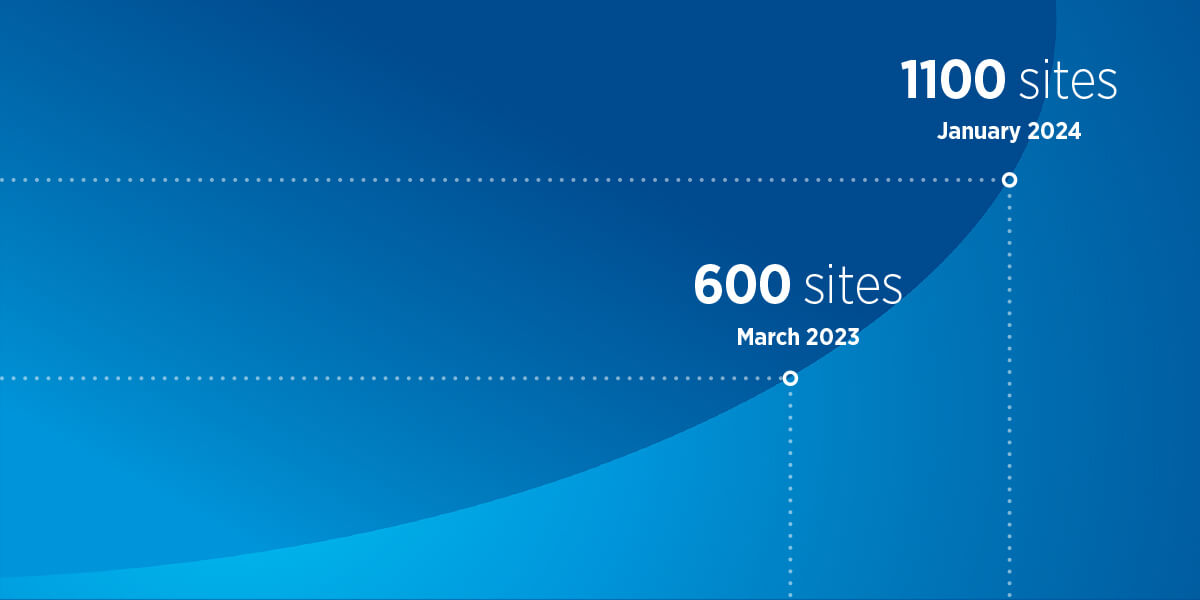
The STOX Suite is built on scientific rigor and peer-reviewed research
The science behind the STOX Suite
One of the goals of new therapies for inflammatory disease is to diminish the effects of steroid-toxicities associated with standard of care. Despite this goal, there were no validated tools to measure the impact of glucocorticoid treatment until the development of the Steritas Glucocorticoid Toxicity Index (GTI). [1] The need for such an instrument was demonstrated by the rapid uptake of GTI for clinical trials, leading to the development of additional instruments.
The pediatric glucocorticoid toxicity index (pGTI) was developed through collaboration with world-leading children’s hospitals and investigators. It is the first composite measure of steroid-toxicity for pediatric applications.[2]
Steritas further expanded its clinical outcome assessment (COA) suite with the development of the Glucocorticoid Toxicity Index-Metabolic-Domains (GTI-MD), an abriged COA that provides a systematic approach to assessing steroid-toxicity in the clinic and existing population datasets.[3]
To date, all GTI instruments are designed to look at changes in glucocorticoid toxicity over time; but our forthcoming addition to the STOX® Suite is different. The GT-SNAPSHOT utilizes a patient's baseline glucocorticoid score to predict their likely future development of steroid-toxicities over time. As such, it provides important information to support therapeutic decision-making.[4]
The progress in instrument development reflects the growing demand for specialized tools to access and manage glucocorticoid toxicity in a range of patient populations, to ensure targeted and effective measurement of steroid-toxicity in a broad range of clinical settings.
The number of publications and studies using the STOX Suite continues to rise as the earliest adopters of the technology report their findings. The GTI has proven to be an essential clinical outcome assessment in more than 25 of the most common inflammatory diseases.
Key publications
Glucocorticoid Toxicity Index 2.0 (“GTI”)
The GTI was published online in the Seminars in Arthritis and Rheumatism in August of 2022 in an original article entitled “The glucocorticoid toxicity index: Measuring change in glucocorticoid toxicity over time,” by Stone, et al. [1]
Pediatric Glucocorticoid Toxicity Index (“pGTI”)
The pGTI was published online in the Seminars in Arthritis and Rheumatism in July of 2022 in an original article entitled “The pediatric glucocorticoid toxicity index by Stone, et al. [2]
Glucocorticoid Toxicity Index MD (“GTI-MD”)
The GTI-MD was published online in The Lancet Rheumatology in July of 2023 in an original article entitled “The Glucocorticoid Toxicity Index-Metabolic Domains, an abridged version of the Glucocorticoid Toxicity Index: post-hoc analysis of data from the ADVOCATE trial by Stone, et al.[3]
Glucocorticoid Toxicity SNAPSHOT (GT-SNAPSHOT) - COMING SOON
The Glucocorticoid Toxicity SNAPSHOT score was first published online in ACR Open Rheumatology in January 2023 in an original article entitled “Baseline Glucocorticoid-Related Toxicity Scores in Giant Cell Arteritis: A Post Hoc Analysis of the GiACTA Trial” by Patel et al.[4]

"Trial sponsors have a great opportunity and challenge to demonstrate what they mean by steroid-sparing and how that translates into healthcare benefits such as reduced hospitalizations, and improved quality of life."
Sudhakar Sridharan, MD
Vice President in Medical Science & Strategy Division at PPD/ThermoFisher

"The GTI is the first and only quantitative measure of steroid-toxicity - It allows us to quantify the scale of adverse reactions, helps us taper steroids, and look after our patients more effectively."
Wen Zhang, MD PhD
Professor Rheumatology at Peking Union Medical College Hospital (PUMCH), Beijing, China

"Steroids have a role in treating so many diseases - and yet, they do not cure any of them."
John H. Stone, MD MPH
Professor of Medicine at Harvard Medical School, and the Edward A. Fox Chair in Medicine at the Massachusetts General Hospital

"The GTI is being used in many trials around the world and the development of the GTI-MD should enable the majority of rheumatologists to quantify glucocorticoid toxicity in day-to-day practice."
Frank Buttgereit, MD
Professor of Rheumatology and Deputy Head of the Department of Rheumatology and Clinical Immunology at the Charite University Medicine (CCM) in Berlin

"Anywhere that steroids are being used in clinical studies, especially randomized controlled studies, there is a place for the GTI."
Paul Brunetta, MD
Head of Clinical & Translational Science, Sana Biotechnology
Adjunct Associate Professor, Pulmonary and Critical Care Division,
University of California, San Francisco
Clinical evidence proves the value of the GTI for drug developers and for patients
The Steritas STOX Suite has been used in 75+ clinical trials, in 1100 sites across 80 countries. To date the STOX Suite has been used to study over 25 disease indications including asthma, lupus, sarcoidosis and vasculitis. The rapid acceleration of the use of the STOX Suite in clinical trials and studies underlines the importance of quantifying steroid-toxicity to the success of these studies.
The ADVOCATE[5] trial enabled the FDA approval of avacopan as an add-on treatment to standard therapy including glucocorticoids for adult patients with severe active anti-neutrophil cytoplasmic autoantibody (ANCA)-associated vasculitis. The GTI was cited as the most important secondary endpoint to demonstrate the efficacy of avacopan compared to glucocorticoid therapy.

Clinical Trials
Clear FiltersPolymyalgia Rheumatica
Evaluation of the Efficacy and Safety of Sarilumab in Patients With Polymyalgia Rheumatica
Phase 3 – A Randomized, Double-blind, Placebo-controlled Study to Evaluate the Efficacy and Safety of Sarilumab in Patients With Polymyalgia Rheumatica Recruitment Status: Terminated (Protracted recruitment timeline exacerbated by COVID-19 pandemic) ...
Polymyalgia Rheumatica, Inflammatory Rheumatism, Giant Cell Arteritis, Idiopathic Inflammatory Myopathies, ANCA Associated Vasculitis, Systemic Autoimmune Disease
PRediction Of DIverse Glucocorticoids toxIcity OUtcomeS (PRODIGIOUS)
Observational Cohort Prospective Recruitment Status: Not yet recruiting Sponsor: University Hospital, Brest Study Population: Patients usually treated with prolonged glucocorticoid therapy in the field of rheumatology. Primary Outcome Measures: ...
Rheumatoid Arthritis, Vasculitis, Systemic Lupus Erythematosus
Monıtorıng Glucocortıcoıd Treatment In Patıents Followed In Rheumatology Clınıc.
Recruitment Status: Sponsor: Study Population: Primary Outcome Measures: Secondary Primary Outcome Measures:
Polymyalgia Rheumatica, Giant Cell Arteritis
Evaluation of the Efficacy and Safety of Sarilumab in Patients With Polymyalgia Rheumatica
Recruitment Status: Terminated (Protracted recruitment timeline exacerbated by COVID-19 pandemic) Sponsor: Sanofi Study Population: 118 participants Primary Outcome Measures: To evaluate the efficacy of KEVZARA (sarilumab) in patients with ...
Giant Cell Arteritis
Evaluation of Efficacy and Safety of Sarilumab in Patients With GCA
Recruitment Status: Sponsor: Study Population: Primary Outcome Measures: Secondary Primary Outcome Measures:
References
- Stone JH, McDowell, PJ, Jayne DRW et. al. The glucocorticoid toxicity index: Measuring change in glucocorticoid toxicity over time. Seminars in Arthritis and Rheumatology. Vol 55 (2022): 152010 DOI: 10.1016/j.semarthrit.2022.152010
- Brogan P, Naden, R, Ardoin SP et. a. The pediatric glucocorticoid toxicity index. Seminars in Arthritis and Rheumatology. Vol 56 (2022) 152068 DOI: 10.1016/j.semarthrit.2022.152068
-
Patel NJ, Jayne DRW, Merkel PA et al. The Glucocorticoid Index-Metabolic Domains, an abridged version of the Glucocorticoid Toxicity Index: post-hoc analysis of data from the ADVOCATE trial. The Lancet Rheumatology. 5:e413-e421 DOI:10.1016/S2665-9913(23)00131-5
- Patel NJ, Xiaoqing F, Zhang Y and Stone JH. Baseline Glucocorticoid-related Scores in Giant Cell Arteritis: A Post Hoc Analysis of the GiACTA Trial. American College of Rheumatolog. 5(1):51-58 (2023) DOI: 10.1002/acr2.11520
- Jayne DRW, Merkel PA, Schall TJ, Bekker P; ADVOCATE Study Group. Avacopan for the Treatment of ANCA-Associated Vasculitis. N Engl J Med. 2021 Feb 18;384(7):599-609. DOI: 10.1056/NEJMoa2023386

